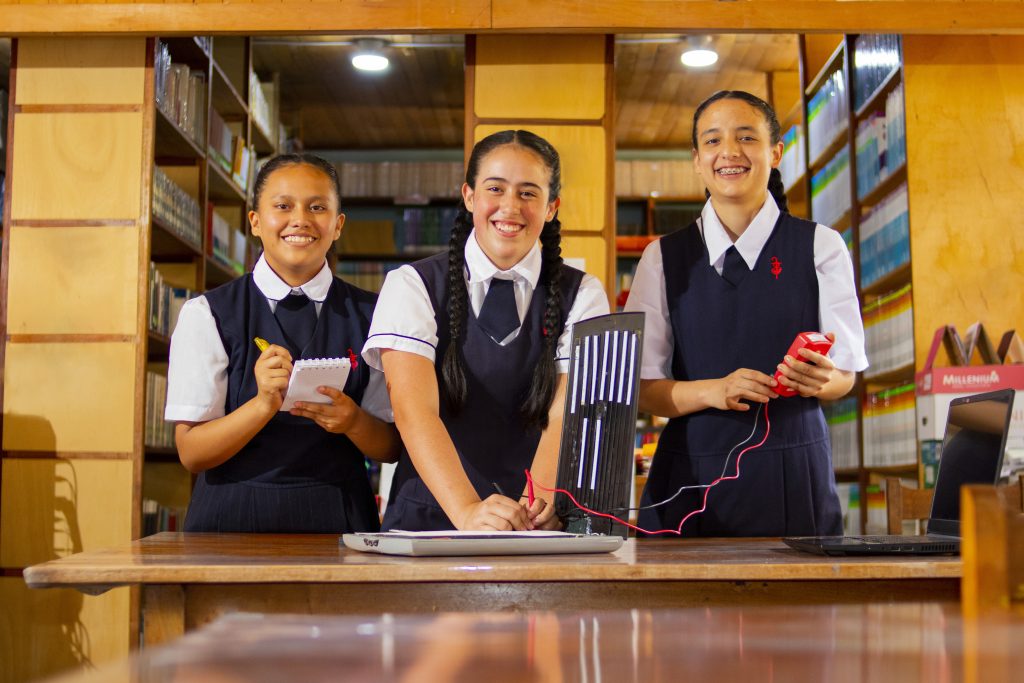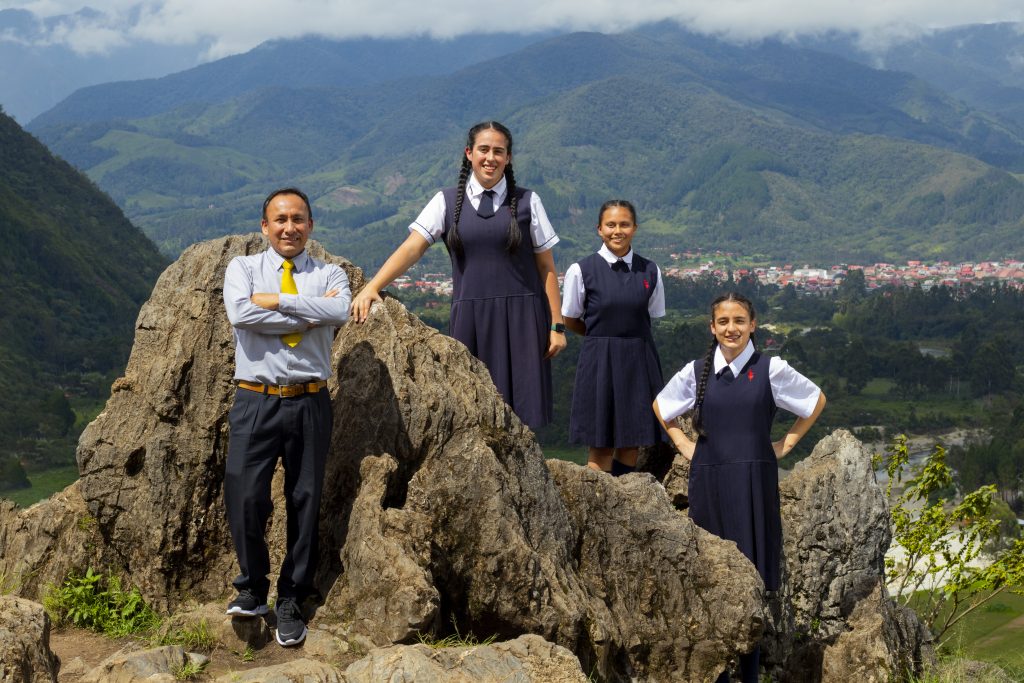What if the movement we do when walking could generate electricity for our homes? This question led a group of three students to create “Chonta-Tec”, a finalist project in the 10th edition of Solve for Tomorrow Peru. Guided by teacher Carlos Moya, the developed mechanism consists of implementing a housing with piezoelectric sensors and a battery mounted on the residents’ shoes so that each step can generate electric current.
The idea arose from the student’s proposal of having a more affordable electricity service, since, according to them, a large number of families in the town of Chontabamba do not have sufficient resources for this. Chontabamba is a district of Peru and is located in the province of Oxapampa, where the emblematic educational institution “Divina Pastora” is also located; a Christian school that focuses on innovation.

According to the mediator teacher, part of the people in Chontabamba are from native communities. “It is a very special place because it has a diversity of wild flora and fauna,” the teacher contextualizes. It is in a region called Ceja de Selva, made up of mountain rainforests, and is located on the eastern flank of the Peruvian Andes between the high Amazon rainforest and the Sierra del Perú. “But these communities have to adapt to the climatological factors of the area, such as torrential rains, and they are far from the urban center, which makes it difficult to access electricity, for example”, explains the educator, who teaches Science and Technology at the school.
These obstacles impact several aspects, including the learning of young people, because they go to school in the morning, in the afternoon they help their families in agriculture and many times they stay up at night to study but they do not have electricity. So they needed to create an alternative. “To be a solution to the communities’ problem, we took into account that the project had to be self-sustaining. That’s how treading is. It doesn’t need sun, air, or other weather factors, but only with the force of the weight of the body,” Moya describes.
One idea, many allies
The students were around 15 years old and in the 4th year of secondary school (the penultimate year of compulsory schooling), with relatives from native communities. The first steps of the project were in 2022, in the classroom, to tell the truth. “We continue working and in 2023 we register for Solve for Tomorrow,” the teacher highlights. “If we compare it with schools in the capital, our laboratory is a little diminished, because we do not have all the necessary resources, but we do have ideas,” believes Moya.
This year, to develop the model of the device, the team had the support of Electronics and Mechatronics technicians from the National University of Trujillo. “For me, alliances are fundamental. When a teacher lacks in opening his laboratory, it is necessary to go to specialized centers that could give us a hand,” he emphasizes.
One of the advantages of the project is its economy. With less than 5 soles (around 1.3 US dollars) you can obtain the piezoelectric sensors necessary for the model. “Certainly, it is a project that can grow and help communities without a great cost,” says the teacher.
It was needed to use approximately nine sensors in the device with the shape of one of the students’ feet as an example. With each heavy stomp, it could generate up to 20 volts, but this discharge must be built into a circuit with devices called diodes that direct the current to the battery so that the battery can “store” the force for later use.
“The role of the teacher is to have a lot of empathy with the students and strengthen their resilience skills. We must also inject the emotional part so that they can look for a possible solution when they have a problem while working on a project,” says teacher Moya.
A more technological future for students and the community
“Chonta-tec” opened doors for the group and perhaps for the town. The prototype was donated to a family in the district that uses it to turn on light bulbs. “Now, with Chonta-tec, students can study at night,” says the teacher, who is already prospecting with the school management and other educators to strengthen the project and obtain investment to be able to make a device with greater power generation capacity of energy and take it to the nearby community.

In addition to the invention itself, the teacher states that the experience at Solve for Tomorrow gave him and his pupils a lot of knowledge. “The workshops we had were very enriching. We had meetings with renewable energy specialists who gave us important proposals.”
The girls, the educator believes, developed self-management; because they were in charge of organizing the roles and responsibilities, giving them the opportunity to better understand their abilities. Additionally, the teacher observes that they have more confidence in themselves. “This year, they will be in the fifth grade of high school and they are already thinking about their vocational development to apply in areas such as engineering, programming, robotics, electronics, and mechanics in different universities in Peru,” he proudly reveals.




